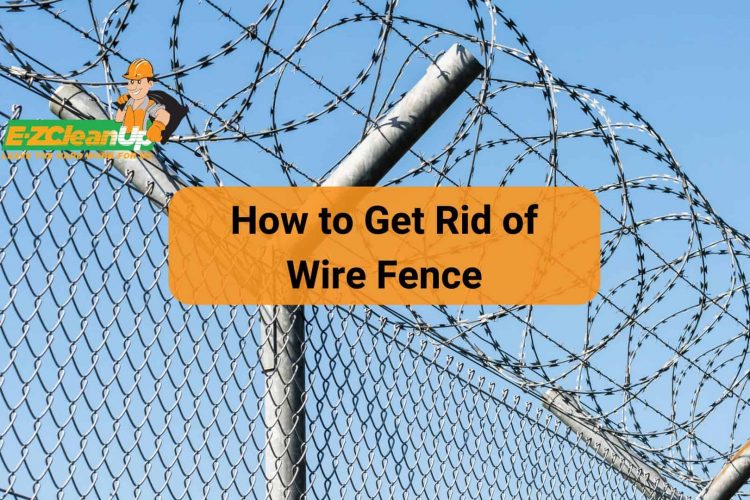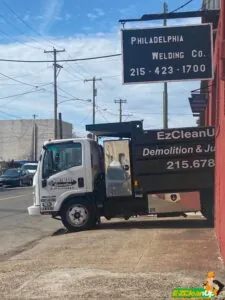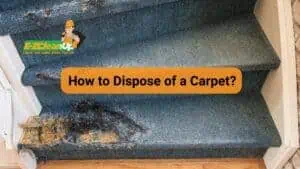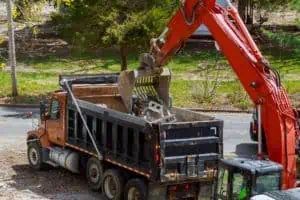For efficient wire fence removal, begin by wearing safety gear, then detach the wire from posts and cut it into sections for rolling and disposal. Release tension carefully to prevent injury. Contact local recycling centers for proper disposal of rolled-up wire.
Learn more about how to get rid of wire fence in our article below.
Step-by-Step Guide to Wire Fence Removal
Removing a wire fence can be approached methodically to ensure safety and efficiency. Here’s a guide to help you through this process.
1. Detaching Wire from Posts
Start by ensuring you’re geared up with safety equipment like gloves and goggles to prevent injury. Locate the fence posts and carefully remove any staples, clips, or bindings holding the wire in place.
Depending on the type of wire and its condition (rusty, tangled, etc.), strategies may vary but prioritizing safety and minimizing damage to your property is key.
Cutting and Rolling Wire Sections
For efficient removal, consider cutting the wire into manageable sections. Using wire cutters, snip the wire at starting points near posts or where it’s easiest to begin rolling. You can apply a technique involving a 55-gallon drum and a 4 by 4 piece of wood for rolling up barbed wire.
By attaching the drum to the wood, you can create a reel that simplifies the winding of the wire. This will make it easier to handle and dispose of.
Managing Tension in Fencing Wire
When removing wire, especially if it’s under tension (like in the case of stretched wire fences), release the tension carefully. This might involve loosening any attached strainers or tension bars gradually to avoid sudden snaps.
If the wire is too tightly wound around a post or if tension can’t be easily released, cutting through the wire with adequate safety measures in place is advisable. Ensure the wire doesn’t whip back or cause injury when cut.
General Tips for Safety and Efficiency
Ensure you observe the following when dealing with the task:
- Wear Protective Clothing: Long sleeves, durable gloves, and eye protection are non-negotiable to prevent cuts and scrapes.
- Proper Disposal: Once the wire is removed and rolled up, contact your local recycling center for disposal instructions. Many types of wire can be recycled.
- Use Appropriate Tools: Arm yourself with wire cutters, pliers, and potentially a reciprocating saw for tougher posts. Having the right tools can significantly ease the removal process.
- Check for Underground Hazards: Before digging around posts, ensure there are no electrical or utility lines in the vicinity.

2. Removing Fence Posts
The process of removing fence posts varies depending on whether the posts are set in soil or concrete. Here’s how you can tackle both scenarios effectively:
Digging Out Posts Manually
For posts set in soil, start by digging around the base to loosen the ground. This will make it easier to pull out the post. If the post is set in a small amount of concrete, dig around the concrete and then lift the post out along with its concrete base. This method requires a shovel for digging and possibly a pry bar to loosen the post further.
Using Mechanical Assistance for Stubborn Posts
For posts that are deeply anchored or set in large concrete bases, mechanical assistance can save time and effort. One effective tool is a car jack, which can be used to apply upward pressure on the post for easy removal.
Ensure the jack is firmly placed and securely attached to the post before lifting. If available, a post puller designed specifically for this purpose can also be highly effective, especially if dealing with multiple posts.
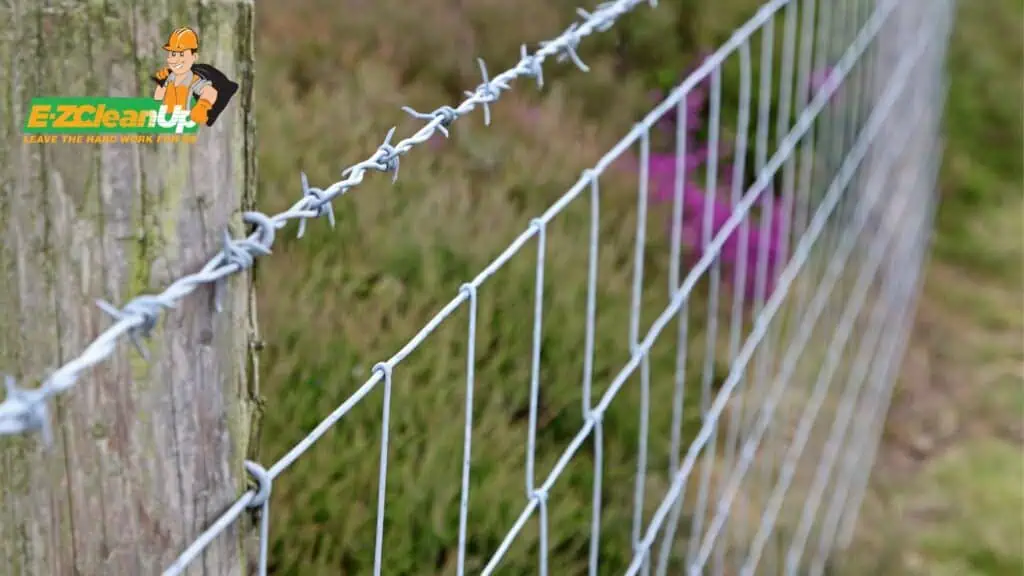
3. Clearing the Area and Preparing for Post-Removal
After successfully removing the fence posts, it’s important to clear the area of any debris, including old wire, broken concrete, and loose soil. If you’ve cut the posts at ground level, consider filling the remaining holes with soil to prevent tripping hazards and maintain level ground.
This step ensures a safe and clean environment for whatever plans you have next for the area, whether it be new construction, landscaping, or leaving it as an open space.
Remember, safety should be your top priority during this entire process. Wear protective gear, including gloves and goggles, to protect against sharp edges and flying debris. And, if you’re using any mechanical aids like car jacks or post pullers, ensure you’re familiar with their operation to avoid injury.
Planning and Preparation for Fence Removal
With the right approach, removing an old wire fence can be straightforward, which will allow you to clear the way for new projects or simply declutter your outdoor space.
Know What You’re Dealing With
Removing wire fences is a project that requires understanding the type of fence involved, assessing the scope of removal work, and ensuring you have the right tools and equipment for the job.
Wire fences come in various types, each serving different purposes, from containing livestock to securing property. Key types include:
Aluminum, Stainless Steel, and Poly Wire Fences
These offer different benefits in terms of durability, ease of handling, and suitability for electrification. Aluminum is lightweight and rust-resistant, making it suitable for electric fences, though it’s less durable than stainless steel. The latter stands out for its strength and longevity. Poly wire is used for its visibility and flexibility in electric fencing setups.
Welded and Woven Wire Fences
These materials are common for farm and residential use. Welded wire is characterized by its welded intersections, which are suitable for lighter-duty applications. On the other hand, woven wire, with its special knots at intersections, is stronger and more adaptable to uneven terrain. This makes it preferable for livestock containment.
Barbed Wire and Electric Wire Fences
These fences serve more specialized purposes. Barbed wire is traditional for perimeter security and livestock control; caution advised due to injury risks. Electric wire fences use low-voltage shocks to deter animals from breaching boundaries. These require proper installation and maintenance for safety and effectiveness.
Additional Varieties
There are other types, like hog wire, bull wire, and chicken wire, that cater to specific needs ranging from heavy-duty containment to protection against small animals.
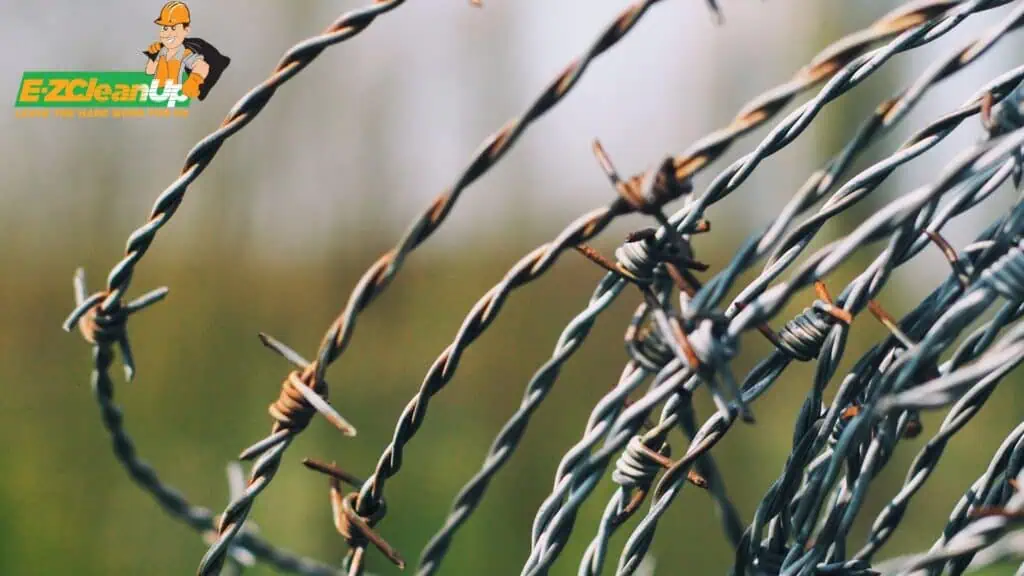
Assessing the Scope of Removal Work
Before starting, it’s crucial to assess the removal scope. Consider the fence’s length, height, and installation complexity. Observe any potential challenges, such as uneven terrain, dense vegetation, or proximity to structures, that may hinder the removal process.
Gathering Necessary Tools and Equipment
The right tools are essential for efficient and safe wire fence removal. Basic tools include wire cutters, pliers, a crowbar or fence post puller, and protective gear.
The specific tools required can vary depending on the fence type—electric wire fences might need additional precautions, while heavy-duty fences like those made of woven or barbed wire may require more powerful cutting tools.
Safety Precautions and Protective Gear
Before starting with the removal process, prioritize safety by equipping yourself with the appropriate protective gear. This includes the following:
- Heavy-duty gloves to protect your hands from sharp wire edges
- Safety goggles to shield your eyes from flying debris
- Sturdy boots to keep your feet safe
Depending on the fence’s condition and the tools you’re using, you might also consider hearing protection and a dust mask. Remember, the goal is to complete the project without injury, so never underestimate the importance of safety gear.
Legal Considerations and Property Lines
It’s crucial to understand the legal implications of removing a wire fence, especially if it borders neighboring properties. Start by verifying property lines to ensure the fence is indeed within your boundary. This might require consulting a property surveyor or a professional surveyor if the boundaries are unclear.
Additionally, some areas have specific regulations regarding fence removal, particularly if the fence could be considered a historical landmark or if it poses environmental hazards. Checking with local authorities or your homeowner’s association can provide clarity and prevent legal issues down the line.
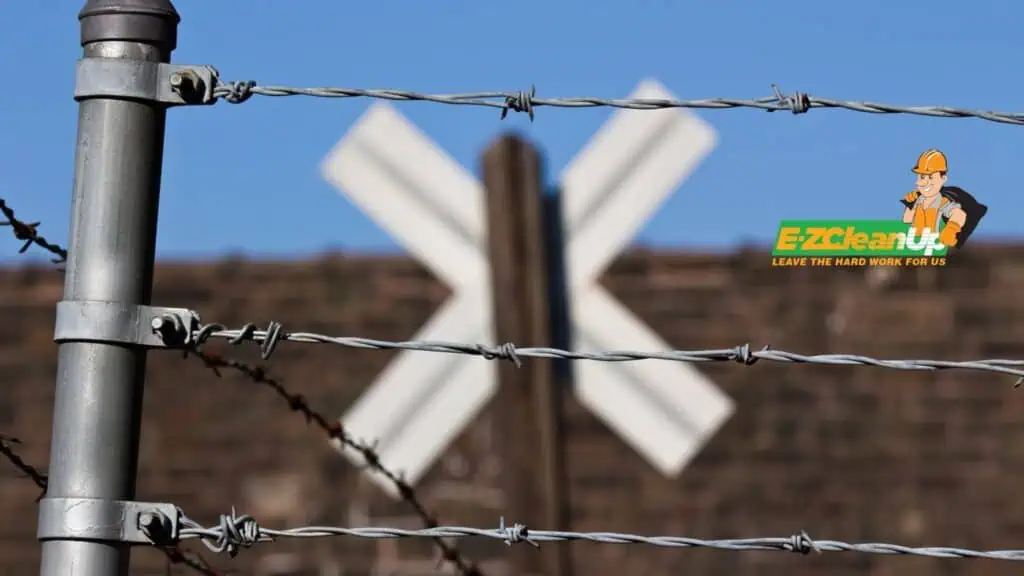
Organizing a Removal Strategy
With safety measures in place and legal considerations checked off, it’s time to plan your removal strategy. This involves assessing the scope of the project—how long the fence is, what materials it’s made of, and the complexity of its construction. Identifying these factors will help you determine the tools and manpower required.
For example, a small, rusted chicken wire fence might be a one-person job, while a lengthy barbed wire fence could necessitate a team approach. Consider the disposal of the removed fence as well; many metal fences can be recycled. This offers an eco-friendly solution to waste management.
Disposal and Recycling of Wire Fencing Materials
Here’s how you can manage the fence’s disposal and recycling effectively:
Sorting and Separating Materials
Begin by assessing your wire fence’s material composition. Use a magnet to determine if it’s made of ferrous metals (like iron, which the magnet will stick to) or non-ferrous metals (such as copper, aluminum, brass, bronze, and stainless steel, which the magnet will not stick to).
Separating these materials is crucial, as they have different recycling processes and potential value.
Recycling Metal and Other Components
Most types of metal fencing, including chain link fences made of steel, are recyclable and accepted by scrap yards. However, it’s essential to remove non-metal components and any dirt or debris attached to the fence.
For coated fencing wire, the recycling process involves removing the plastic coating to recycle the metal wires beneath. Remember, recycling wire fencing not only conserves resources but also contributes to environmental protection by reducing landfill waste.
Options for Responsible Disposal
If recycling for cash isn’t your primary aim, consider other responsible disposal methods:
- Donation: Some organizations, including Habitat for Humanity ReStores, may accept wire fencing if it’s in good condition.
- Creative Repurposing: Explore artistic or practical projects, like garden trellises or chicken pens, to give your old fencing a new life.
- Scrap Yards: If you decide to sell, contact local scrap yards to inquire about their policies regarding fencing wire and other metal items. Keep in mind that they might have specific requirements, such as rolling up the fencing and removing any non-metal components.

Alternatives to Complete Removal
Exploring alternatives to completely removing wire fences can provide both environmental benefits and creative opportunities. Here are some practical and sustainable approaches:
Repurposing Sections of the Wire Fence
Old fence materials, including wooden, concrete, or metal posts, can be creatively reused in various DIY projects. For instance, reclaimed wood from old fences can be crafted into raised garden beds, low tables, or even as supports for new wire fences.
The key is to assess the condition of these materials and leverage their aesthetic and functional qualities in new ways. This approach not only minimizes waste but also adds a unique character to your living spaces.
Renovating or Repairing Existing Fences
Instead of a complete removal, consider renovating or repairing your existing fence. Simple steps like cleaning, sanding, and repainting or staining can significantly extend the life of a fence.
For fences with more extensive damage, replacing affected sections or reinforcing weak spots can restore their function and appearance. This is a cost-effective way to maintain the boundary and aesthetic appeal of your property without the need for total replacement.
Donating Usable Materials to Community Projects
Donating usable sections of your old wire fence to community projects or individuals in need is another excellent alternative. Organizations, community gardens, or local artists often seek such materials for construction, gardening projects, or artistic endeavors.
By donating, you contribute to community development and environmental sustainability by ensuring these materials are reused rather than discarded.
Moreover, creatively repurposing or upcycling fence posts into new functional or decorative elements is a rewarding task. Ideas include turning them into mail stations, garden benches, welcome signs, or even artistic marble fences.
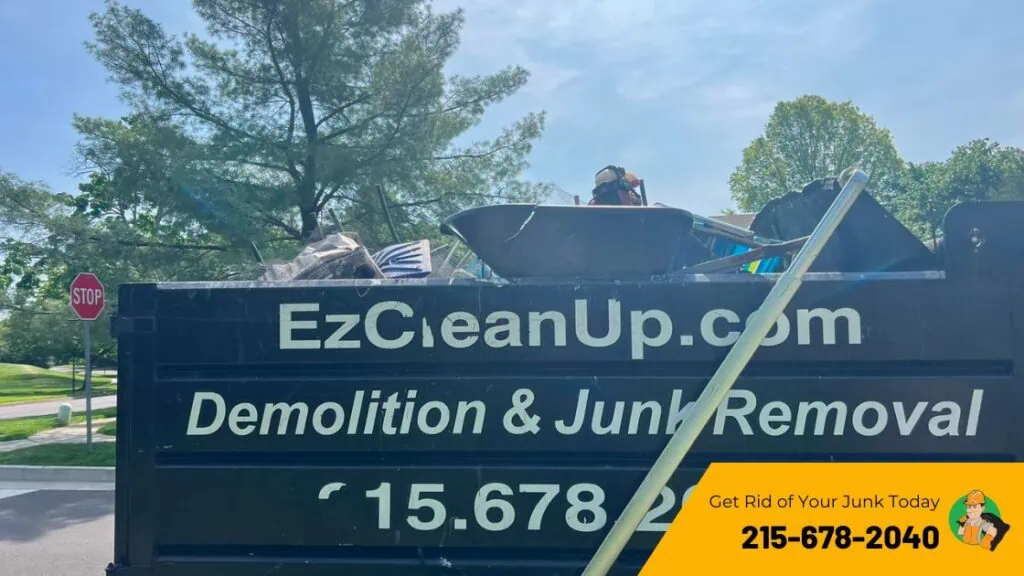
Simplify Wire Fence Removal
The removal of wire fences is a necessary but difficult task, filled with obstacles from start to finish. From dealing with sharp edges to finding a suitable disposal method, the process is anything but straightforward.
This is where EZ CleanUp can help. We offer a straightforward option for clearing your property of unwanted wire barriers. Our expertise in junk removal extends to wire fences, where we prioritize safety, efficiency, and environmental responsibility.
Reach out to us if you’re intent on achieving a cleaner, clearer outdoor space without the headache of doing it yourself.

